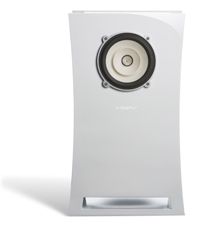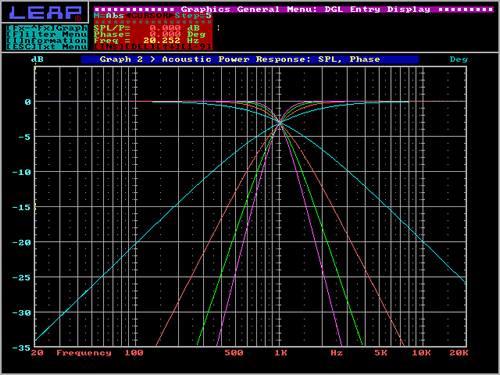- AccurateRip
- Acoustid
- AES/EBU
- AirPlay
- Amplifier
- aptX
- Audio file formats
- ASRC
- AVB
- Bit perfect jitter
- Bits: 16 or 24
- Bit perfect playback
- Bitrate
- Bluetooth
- Burn-in
- BWF
- Cables
- CDtext
- Chromecast
- Clipping
- Clock
- Codec
- Compression
- CRC
- Crossover
- Cue sheet
- DAC
- Damping
- DASH
- Digital
- Digital Room Correction
- Dither
- DLNA
- Drivers
- DoP
- DSP
- EBU R128 (loudness)
- FFT
- FireWire
- Freedb
- Gapless playback
- Generation loss
- HDMI
- Headphone listening
- Hearing
- Hires recording
- Homeplug
- I2S
- ID3
- Inter sample peak
- LDAC
- Linearity (DAC)
- Memory playback
- Music Server
- OCF
- OFC
- PCM
- Perception
- RAID
- ReplayGain
- Ripping
- RFI
- RIAA
- Router
- Sampling, up and over
- Sample Rate Conversion
- Speakers
- S/PDIF
- Storage
- Sync
- Tagging
- Toslink
- Transcoding
- UAA
- Units
- UPnP
- USB
- VST
- WiFi
- WiSA
Crossover
The audible range is 20 - 20.000 Hz.
To reproduce music correctly, a speaker must be able to reproduce this range.
To reproduce bass, you need a speaker moving a substantial amount of air at a low pace.
So big and strong and therefore heavy.
To reproduce high frequencies, it must move very fast so it must be light and small.
It is difficult combine these requirements in one speaker but they do exist, the full range driver.
It is practically impossible for a single radiator to cover the 20 Hz to 20 kHz audio frequency range at adequate sound pressure levels (SPL) and with wide dispersion off-axis. At a 50 Hz bass frequency, for example, it takes an air volume displacement of 214 cm3 to generate 90 dB SPL at 1 m distance from the source in free space. Take a typical 6.5 inch (132 mm effective) diameter driver and its cone would have to move 14 mm peak-to-peak linearly, which by far exceeds its excursion capability.
At 1000 Hz, though, the same driver would have to vibrate only with (50/1000)2 = 1/400th of this excursion for the same 90 dB SPL.
In practice a lot of systems are 2-way, one big, strong and heavy one for the bass (woofer), one small and light for the mid/high range (tweeter).
Feed high frequencies into the bass and it probably will produce some distorted sound and heat up a little.
Feed the bass signal into the tweeter and it will burn.
You need two filters, a low pass for the bass and a high pass for the tweeter to protect them against frequencies they can’t reproduce.
As the bass filter falls off, the filter for the tweeter comes into play so somewhere these two filters slopes crosses. In other words, a crossover.
This covered in more detail here.
Full range driver
Filters (a crossover is a combination of a low pass and a high pass filter) are troublesome.
If they don’t meddle with the frequency response, they do something nasty in the time domain (phase) or visa versa.
The answer is a full range driver.
As it covers the entire audio spectrum, you don’t need a crossover.
As stated above, making a driver strong and big enough to produce the lowest bass and light and small enough to produce the highest treble is very challenging.
Full range drivers in general don’t perform well in the bass department. They need to be horn loaded to produce sufficient base.
Horns do things like altering the phase, coloration, etc.
Full range drivers do exist but it is a bit esoteric part of the HiFi world.
With one exception; almost all headphones have a single driver.

Voxativ PI full range speaker US$ 13,500


